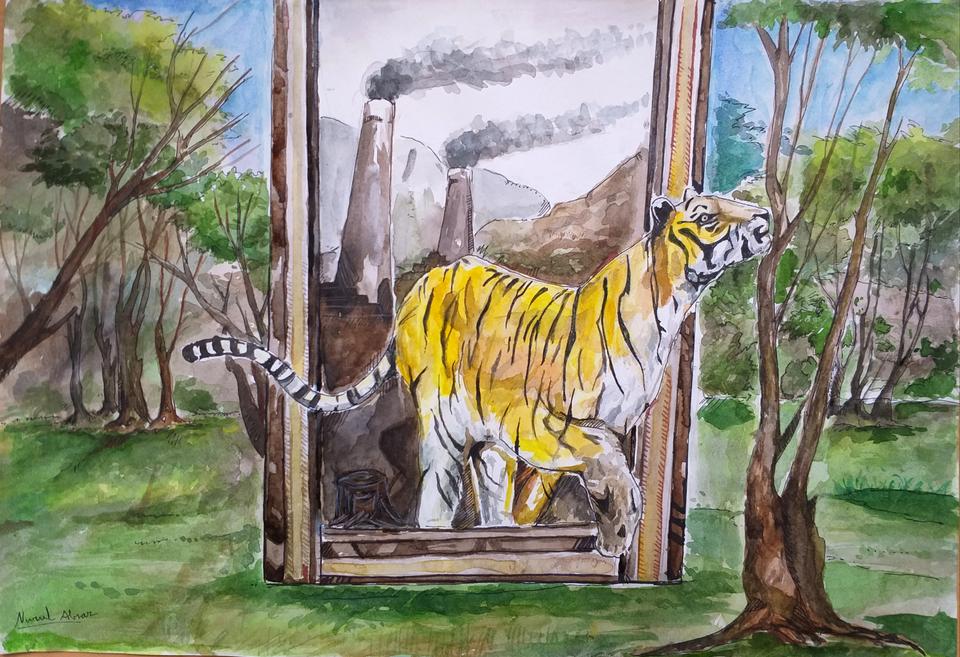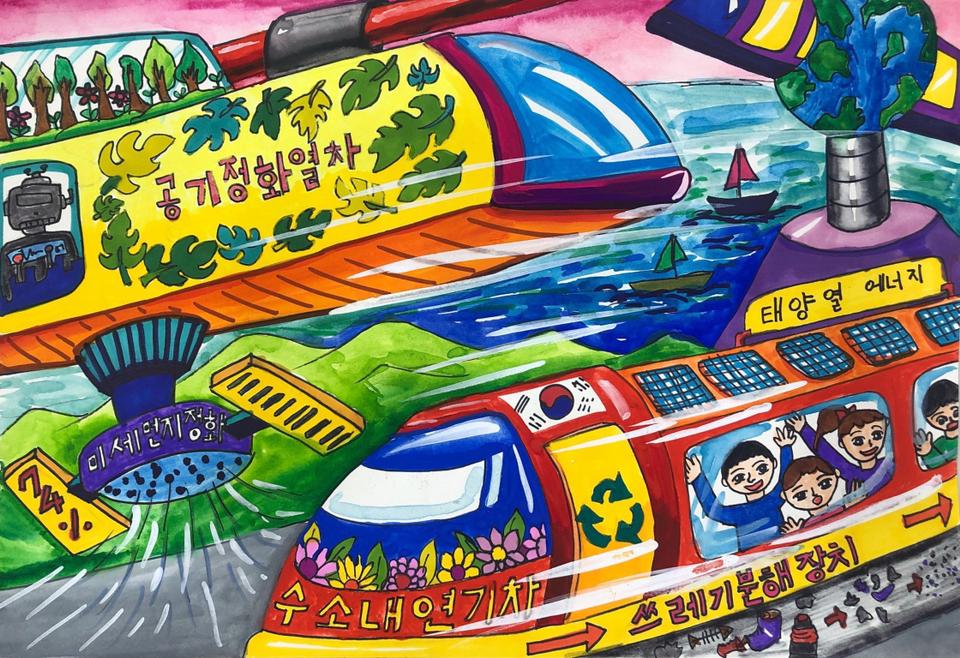Children across the world, particularly in Asia, are highly vulnerable to the climate crisis. This is how they expressed their hopes and their fears.
Global heating is irreparably reshaping our world and children are, and will continue to be, the worst affected.
Children born in 2020 are more likely to be hit harder by climate disasters than their grandparents, even if countries fulfil their current pledges to cut future carbon emissions, according to recent research by Save the Children and the Vrije Universiteit Brussels.
Newborns will grow up to experience twice as many droughts and wildfires, three times more river floods and crop failures, and seven times more heatwaves in their lifetime than someone who is 60 years old today, the new data shows.

Since children, especially from low and middle income countries, will continue to bear the heaviest burden of the climate crisis impacts, Save the Children organised a competition for them to express their experiences, fears and solutions through art.
The winning entries, chosen by a panel of teenage climate activists, were from eight Asian countries and two refugee communities and were displayed at the COP26 climate summit.
Here is a look at a selection of their creations.
Mohammad Hossain, an 11-year-old Rohingya refugee from Myanmar, earned the top prize for his climate-inspired painting, depicting the heavy floods that destroyed his home earlier this year in Cox’s Bazar in Bangladesh, the world’s largest refugee settlement.

“We recently had floods in our refugee camp and I think it happened due to climate change. My art shows how we suffered in the flood,” said Mohammad Hossain.
“I am really feeling great that my art will be at COP26. I win a lot of drawing competitions, but this one is different for me, as I wanted people all around the world to keep thinking about Rohingya children,” he added.

Ten-year-old Yujeong Nam from South Korea, was awarded a top prize for her painting “Clean Sea”.
“Thus dolphins, seagulls, & other sea creatures are happy with the clean ocean,” said Yujeong Nam.
“I hope that in the future we will have a planet with no trash, and that we can breathe clean air everywhere.”
Seven-year-old Ushoshi Momen from Bangladesh draws attention to the scarcity of drinking water with the photo she took for the contest.
“Tania, a village farmer, collects water from a small pond which is almost dry. There is no other source of water near her home,” Momen said.
“The shortage of drinking water and water for cultivation has intensified due to climate change. The problem is worsened in dry seasons when even tube wells do not draw up enough water.”

Eleven-year-old Bangladeshi Mustofa Nurul Absar drew a picture about how climate change and environmental pollution are being felt in nature.
“The Sundarbans of Bangladesh is home to the Royal Bengal Tiger. The greenery; the trees of the Sundarbans are being damaged to meet human’s needs.”
“This reduces the amount of oxygen, and produces the amount of carbon dioxide in the air increases. Their lives are under threat. If things continue as they are, the Royal Bengal Tiger species will be lost from earth,” he added.

Thirteen-year-old Seungjun Baek from Korea depicts his idea about trains that could be a solution to the climate crisis.
“I believe for humans and nature to coexist, environment-friendly trains will play an important role in the recovery process of damaged nature,” he said.
“I depict future trains with needed functions like air purification, trash decomposition and a hydrogen internal combustion engine train.”
“An onboard air purification system would let people know particulate matter concentrations in the air at their current location and report its purification process whilst producing oxygen for passengers in the train,” he explained.

Fifteen-year-old Japanese winner Mayuko Miyahara’s painting “Living together” depicts how humans and other living things should coexist and prosper.
“I hope that Japan and other countries will take the initiative in addressing environmental issues, and recognise that energy, though essential for our daily lives, is a burden on the environment,” she said.
Source: TRTWorld and agencies
Children illustrate how climate change affects them
Source: News Achor Trending
0 Comments